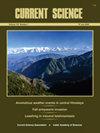野生茄属植物对灰象甲有摄食抗虫作用(鞘翅目:麻蝇科)
IF 1
4区 综合性期刊
Q3 MULTIDISCIPLINARY SCIENCES
引用次数: 0
摘要
本研究旨在鉴定茄属植物对茄子害虫灰象甲的抗性来源。筋膜下棘球虱。在田间和体外条件下,对84个栽培和野生茄子基因型对灰象甲的取食偏好/非偏好进行了筛选。所有栽培基因型和5种野生基因型(苦茄子、吉洛茄;黑色茄属植物;非洲茄子;埃塞俄比亚茄(Solanum aethiopicum L.)和荷兰茄(Solanum acculeatissimum Jacq.)对灰象甲高度敏感。其他野生种,即热带苏打苹果,Solanum viarum Dunal;乳果(=奶牛的乳房);欧洲茄属植物;蟑螂莓、辣椒素;巴西龙葵,龙葵本文章由计算机程序翻译,如有差异,请以英文原文为准。
Wild Solanum species exhibit feeding antixenosis against ash weevil, Myllocerus subfasciatus Guerin-Meneville (Coleoptera: Curculionidae)
This study was aimed at identifying host plant resistance sources of Solanum species against the dreaded brinjal pest, ash weevil. Myllocerus subfasciatus Guerin-Mene-ville. A total of 84 brinjal genotypes (both cultivated a nd wild) were screened for feeding preference/non-pre-ference against the ash weevil under field as well as in vitro conditions. All the cultivated and five wild genotypes (bitter brinjal, Solanum gilo Raddi; black nightshade, Solanum indicum L.; African eggplant, Solanum macro-carpon L.; Ethiopian eggplant, Solanum aethiopicum L. and Dutch eggplant, Solanum acculeatissimum Jacq.) were found highly susceptible to the ash weevil. The other wild species, namely tropical soda apple, Solanum viarum Dunal; nipple fruit (= cow’s udder) Solanum mammosum L.; European nightshade, Solanum nigrum L.; cockroach berry, Solanum capsicoides Allioni; Brazilian nightshade, Solanum seaforthianum Andrews
求助全文
通过发布文献求助,成功后即可免费获取论文全文。
去求助
来源期刊

Current Science
综合性期刊-综合性期刊
CiteScore
1.50
自引率
10.00%
发文量
97
审稿时长
3 months
期刊介绍:
Current Science, published every fortnight by the Association, in collaboration with the Indian Academy of Sciences, is the leading interdisciplinary science journal from India. It was started in 1932 by the then stalwarts of Indian science such as CV Raman, Birbal Sahni, Meghnad Saha, Martin Foster and S.S. Bhatnagar. In 2011, the journal completed one hundred volumes. The journal is intended as a medium for communication and discussion of important issues that concern science and scientific activities. Besides full length research articles and shorter research communications, the journal publishes review articles, scientific correspondence and commentaries, news and views, comments on recently published research papers, opinions on scientific activity, articles on universities, Indian laboratories and institutions, interviews with scientists, personal information, book reviews, etc. It is also a forum to discuss issues and problems faced by science and scientists and an effective medium of interaction among scientists in the country and abroad. Current Science is read by a large community of scientists and the circulation has been continuously going up.
Current Science publishes special sections on diverse and topical themes of interest and this has served as a platform for the scientific fraternity to get their work acknowledged and highlighted. Some of the special sections that have been well received in the recent past include remote sensing, waves and symmetry, seismology in India, nanomaterials, AIDS, Alzheimer''s disease, molecular biology of ageing, cancer, cardiovascular diseases, Indian monsoon, water, transport, and mountain weather forecasting in India, to name a few. Contributions to these special issues ‘which receive widespread attention’ are from leading scientists in India and abroad.
 求助内容:
求助内容: 应助结果提醒方式:
应助结果提醒方式:


